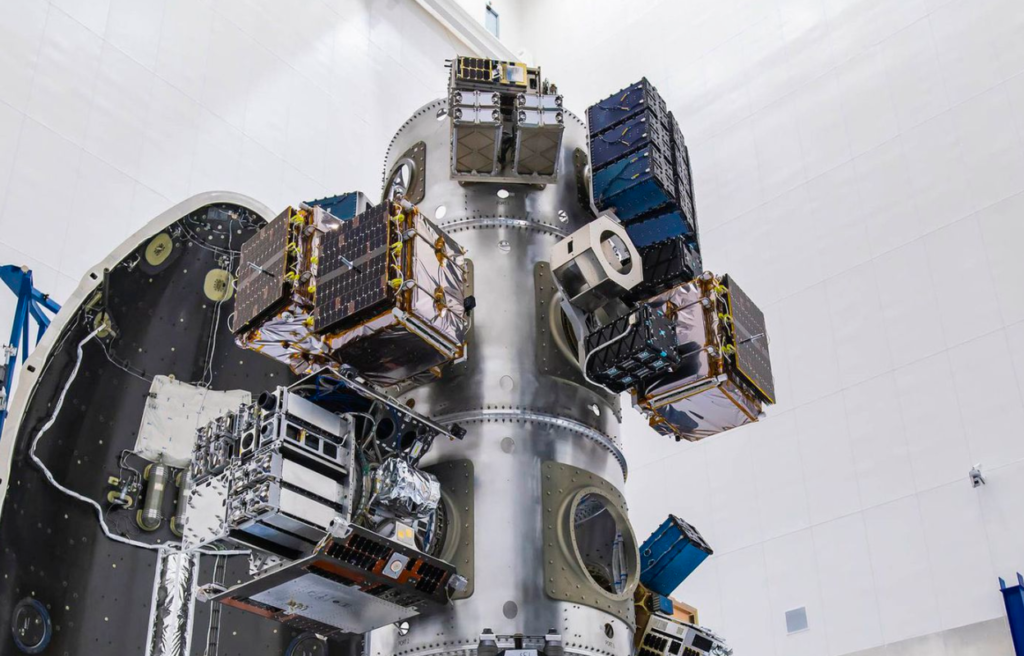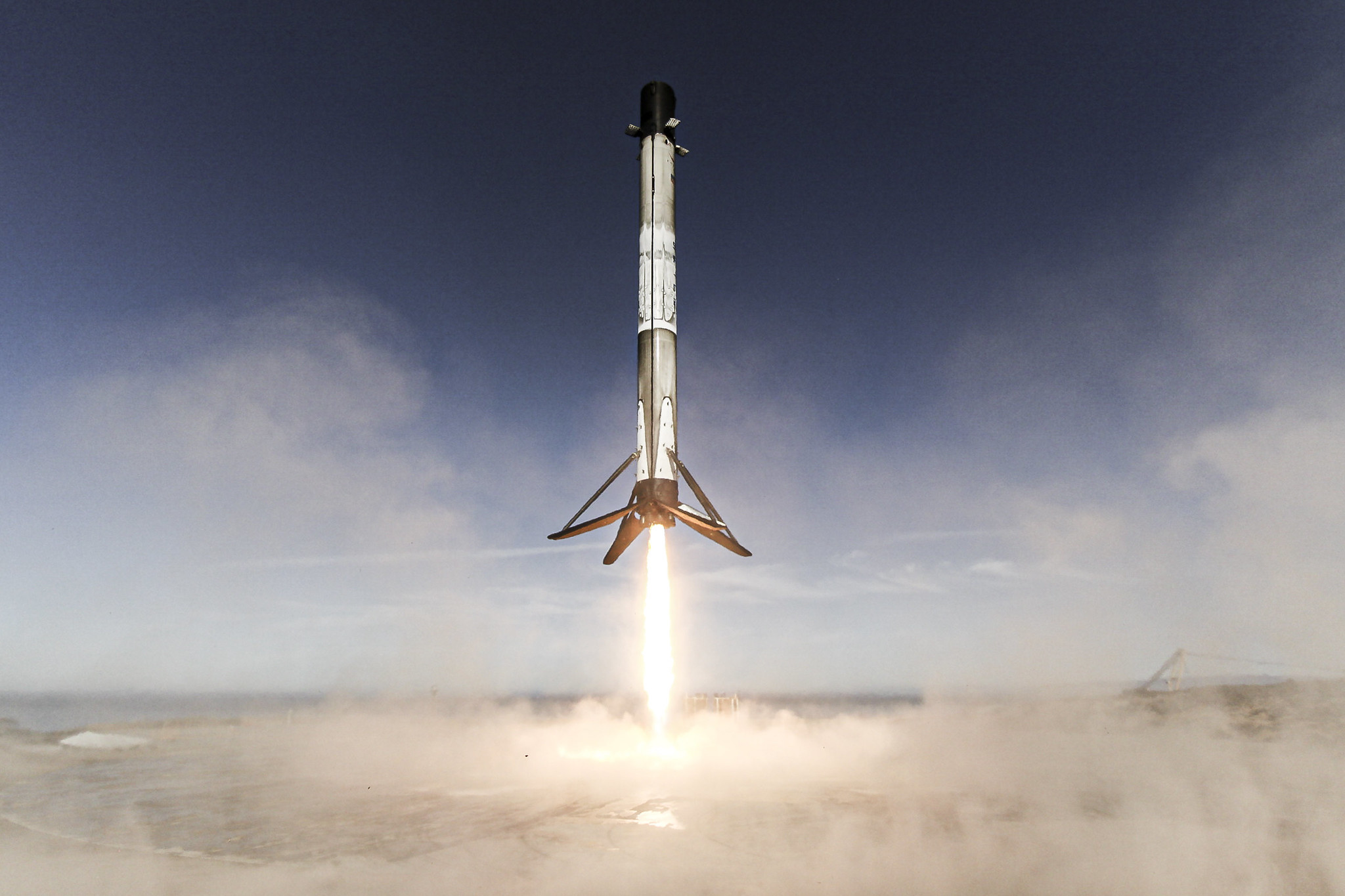
How Does SpaceX’s SmallSat Rideshare Program Work?
The small satellite market is bigger than ever before and growing extremely fast. Different companies small and large around the country and globe are working to fill this demand by providing capable launch vehicles. SpaceX is one of these companies that consistently launches satellites for many different customers. This brings up the question of what is SpaceX’s rideshare program and how does it work?
SpaceX’s smallsat rideshare program offers smaller payloads and many customers an affordable launch vehicle and service all in one. SpaceX does this by launching many different customer payloads at the same time. This along with the Falcon 9 ensures low costs, schedule certainty, and contract flexibility. All of which provides a very unique and helpful service to many different companies.
Since the demand is so high, launch providers are working out ways to offer a service no matter how powerful the launch vehicle is. This helps SpaceX get more revenue and provide a launch service for all different types of technology and satellites. Additionally, this service has allowed larger launch vehicles including the Falcon 9 to compete with smaller launch providers in terms of cost per kilogram.
What Is The Point Of The Rideshare Program?
/cdn.vox-cdn.com/uploads/chorus_image/image/59840751/42025498972_8720104d8a_o.0.jpg)
The rideshare program revolves around opening up a single Falcon 9 launch too many different smallsat customers at the same time. The Falcon 9 has a payload capacity of 22,800 kilograms. SpaceX often fills this capacity with a single large satellite and launches the payload to its designated orbit. However, the rideshare program changes this process. As I mentioned prior there is a very large demand for launching satellites and other technology into low Earth orbit that does not weigh anywhere near 22,800 kg. If you are a company with 400kg of cargo that you need to launch, you’re not going to spend tens of millions to take up less than 2% of the Falcon 9’s payload capacity.
That would be an immense waste of money and you would end up going a different route. Thanks to the rideshare program, you can purchase however much space and weight capacity you need for a reasonable price. SpaceX is able to offer a lower price because they fill the rest of the space with similar small satellites and other technology. This means a single launch could have over 100 different satellites all with different purposes made by different companies. Often the customer who purchased the majority of the payload capacity will choose the orbit, or SpaceX will have a set orbit that companies can choose to purchase a spot and head to. This effectively offers an affordable cost no matter how small the satellite on a large rocket such as the Falcon 9.
How Does Rideshare Work?
General Service Features – SpaceX puts a lot of work into simplifying and making the process as appealing as possible. They do this in three main ways including cost, schedule certainty, and contract flexibility. Starting with the cost which I partially mentioned before. Specifically, companies can purchase 200kg worth of weight for as low as $1 million. Any additional mass on top of that will be $5,000 per kilogram. This also depends on additional factors such as size or the orbit you are heading to. Additionally, SpaceX mentions there are affordable rates also available to Mid-Inclination LEO, GTO, and TLI.
The next feature is schedule certainty. These SmallSat missions launch approximately every 4 months. These higher frequency launches give customers more options for possible orbits and time frames. This is a big benefit because the orbit destination is a big downside in rideshare missions. Finally, SpaceX offers contract flexibility. If a payload is delayed, SpaceX applies 100% of the money paid towards the cost of rebooking on a future mission. This helps ensure the cargo and spot on the rocket that was purchased launches with or without a delay. In terms of booking a spot on the rideshare program, it is quite simple as well. Customers can go on SpaceX’s website and select the desired orbit, the date, and the payload mass. From there they can get in contact with SpaceX and launch their satellite.
Falcon 9 – Another major feature of SpaceX’s rideshare program is the Falcon 9 itself. Currently, SpaceX offers the rideshare program on Falcon 9. It is possible in the future Starship could offer a similar service, but for the time being, Falcon 9 is the primary option. One of the reasons SpaceX is able to offer a surprisingly affordable rate per kilogram is thanks to the Falcon 9’s lower costs. While not fully reusable, the reusable first stage helps reduce costs per launch which makes it cheaper for rideshare customers as well. With over 22,000 kg of payload capacity to low Earth orbit, the rocket can carry a lot of different satellites in a single mission. Not too long ago SpaceX launched a SmallSat rideshare mission with 143 spacecraft onboard. This helps put in perspective how much weight along with space is within the Falcon 9’s fairings. Specifically, the Falcon 9 fairings are 13.1 meters tall and have a diameter of 5.2 meters.
Payload Configurations – The final important feature of SpaceX’s rideshare program is the available payload configurations. The Falcon 9 uses a large structure positioned in the center of the fairings to hold a large array of satellites. The structure contains many different ESPA ports either 15 inches across or 24 inches across. Each is positioned all the way around a center column within the fairings to make use of as much space as possible. The 15-inch port mass is 454kg while the 24-inch port mass is 830kg. Additionally, for larger spacecraft, custom configurations and a top slot are available. SpaceX even mentions to contact them directly for payloads that are too small for a 15-inch port. This ensures all different sizes of satellites and general payload can be sent in a rideshare mission.
Downsides Of Rideshare

While SpaceX’s rideshare program offers a large list of benefits, the service is not perfect. There are a few downsides to buying a spot with many others on the top of a Falcon 9. The first major downside is the orbit. When putting a satellite in orbit there are a lot of different options. This not only includes the distance from the planet but other factors as well. When buying a spot on a rideshare mission, you end up losing control of your cargo’s destination. It may end up going to the correct orbit, however, if the customer had chosen a dedicated small-lift launch vehicle, the mission could be dedicated to them. The customer could then choose every single detail about the mission including the exact orbit that works best with their satellite. The other downside has to do with control of the mission. Similar to picking the orbit, you have less say and input on dates, times, etc.
Conclusion
With the small satellite market continuing to expand, so is the demand to launch small satellites and cargo. Many different companies are working to fill this demand with launch vehicles and services including SpaceX. SpaceX has a unique rideshare program that works to offer smaller payloads an affordable launch vehicle. They do this thanks to the Falcon 9, payload configurations, and a lower cost. All work together and create an appealing offer to a lot of customers with small satellites and other technology. We will have to wait and see how SpaceX’s rideshare program continues and the impact it has on the small satellite market over time.
